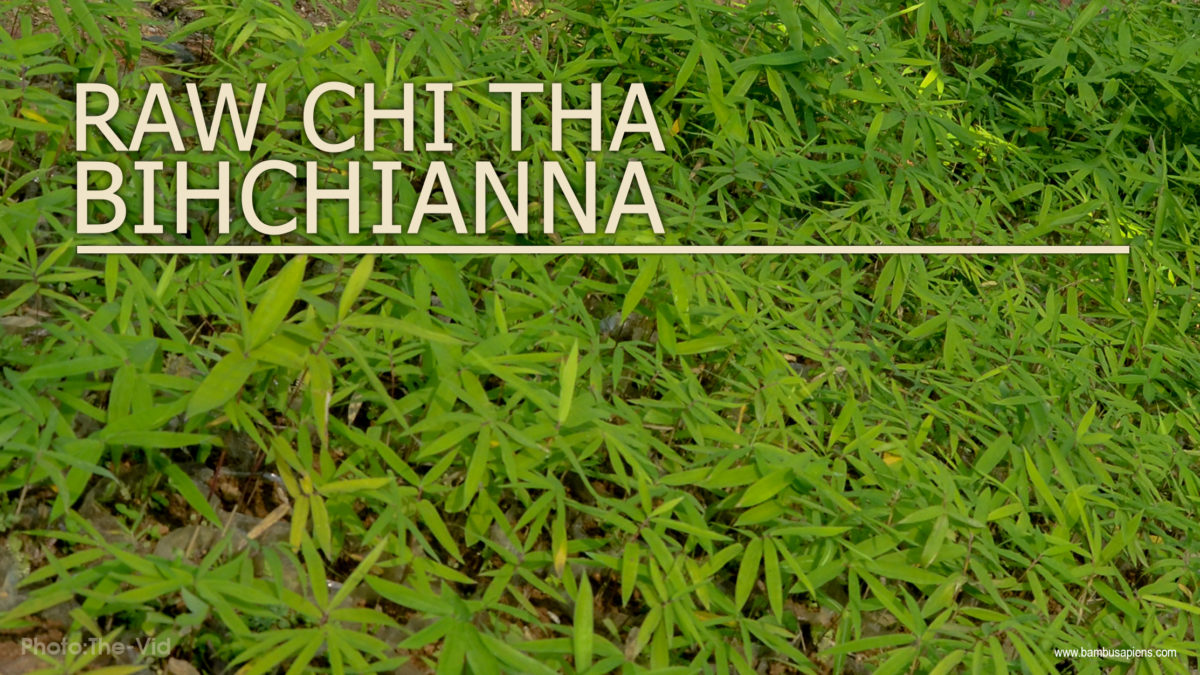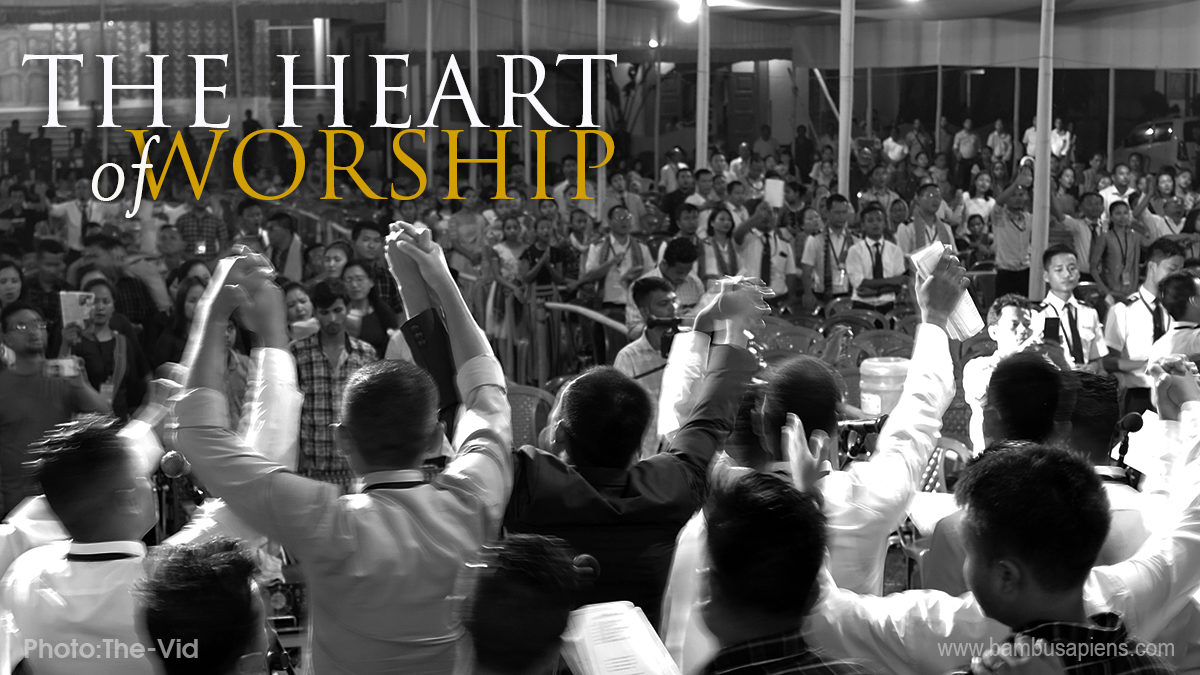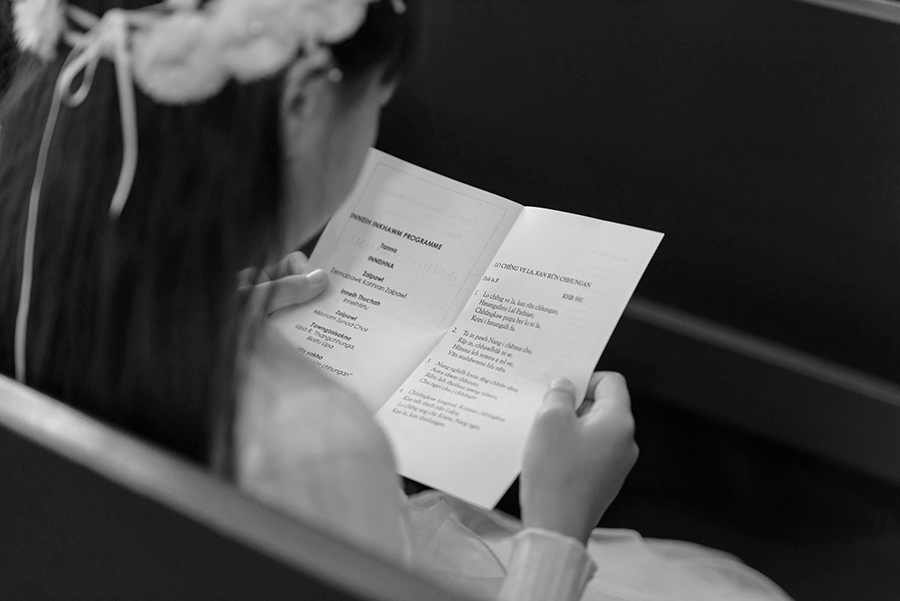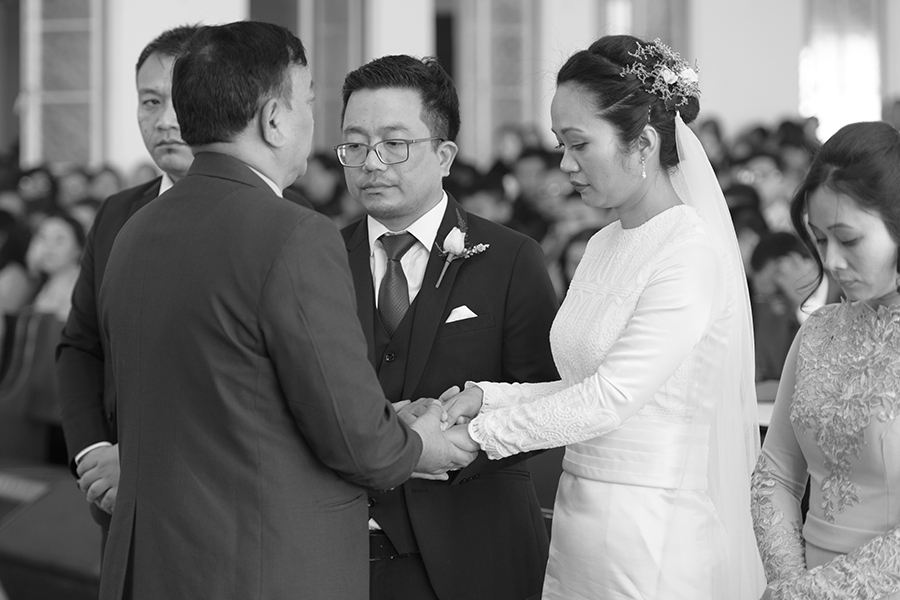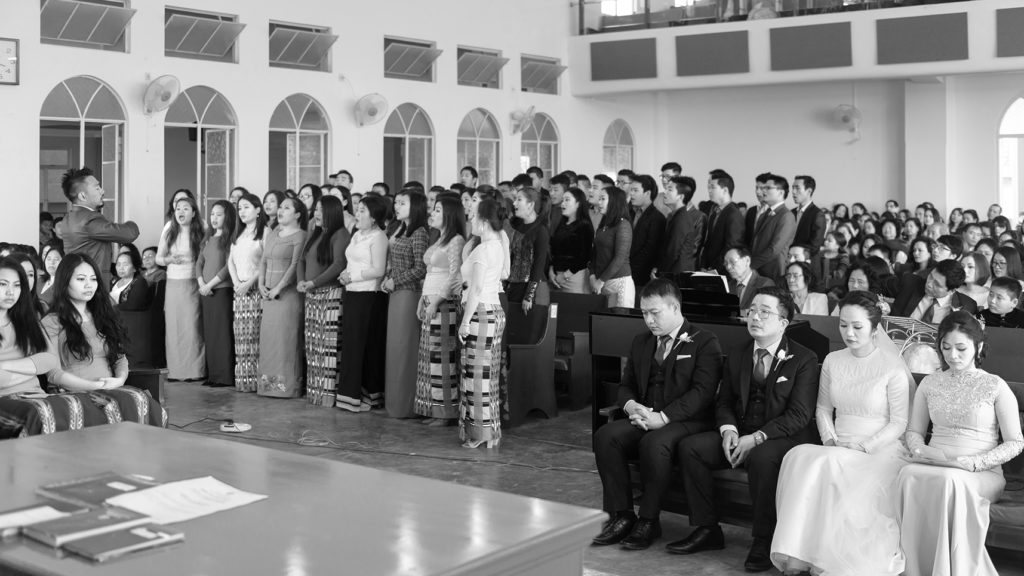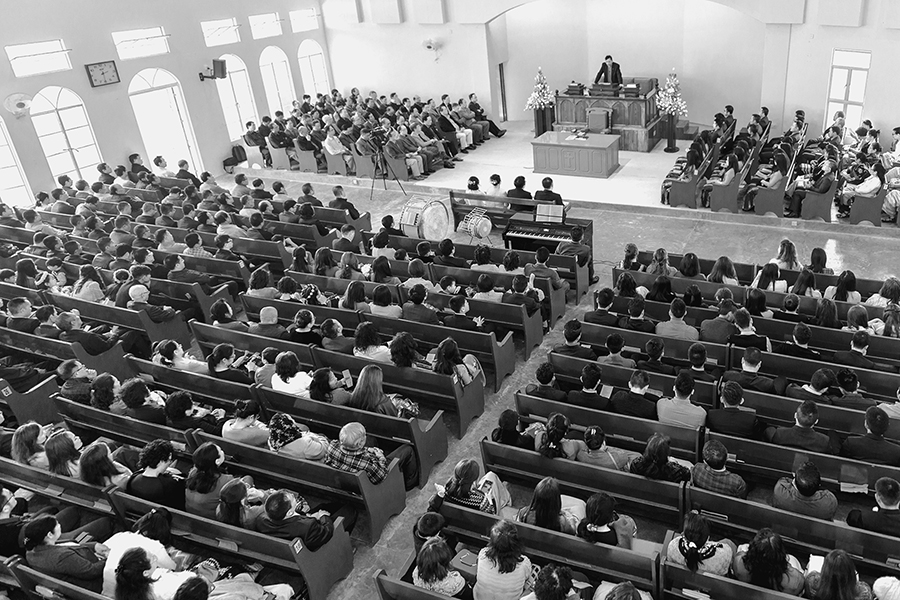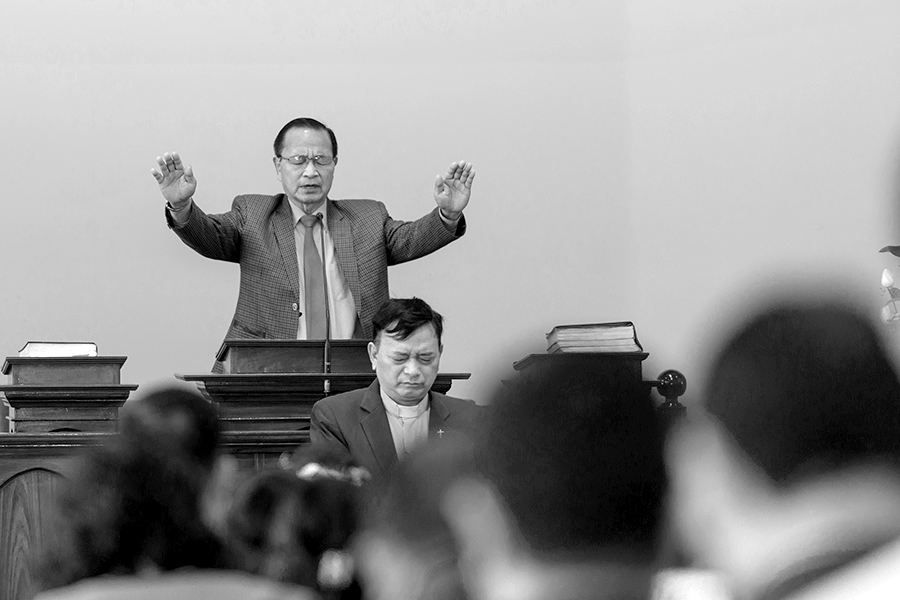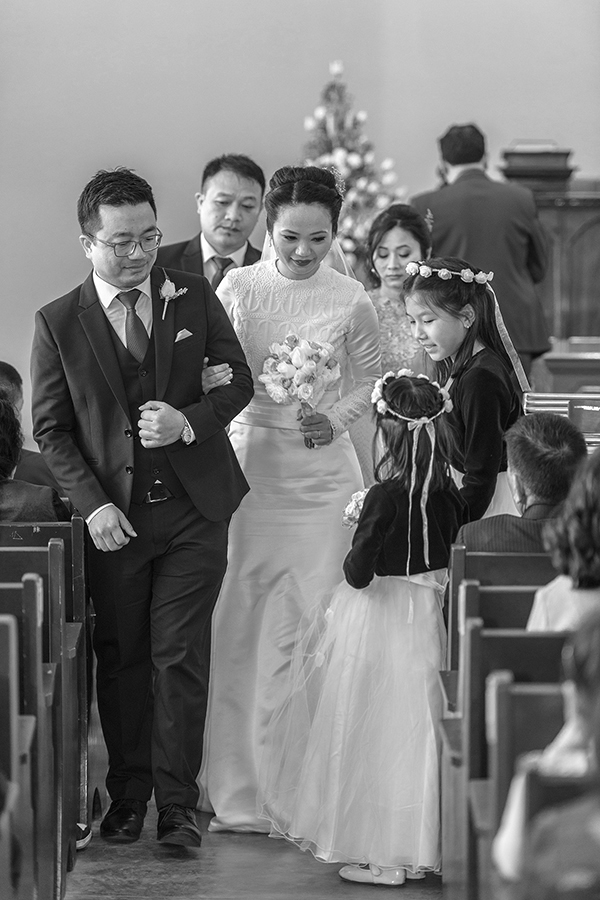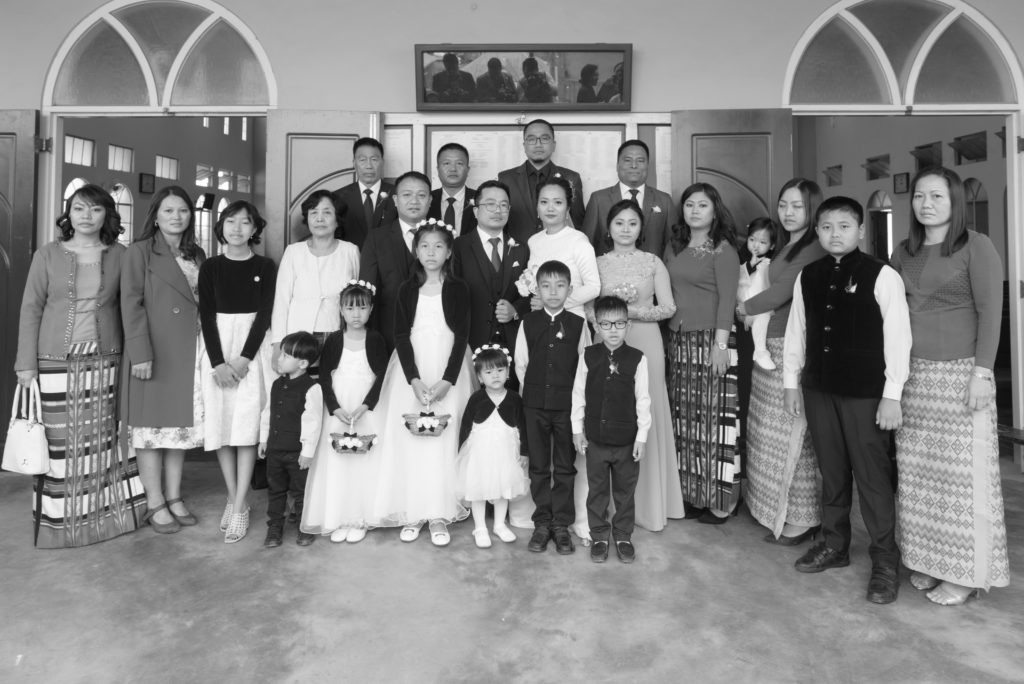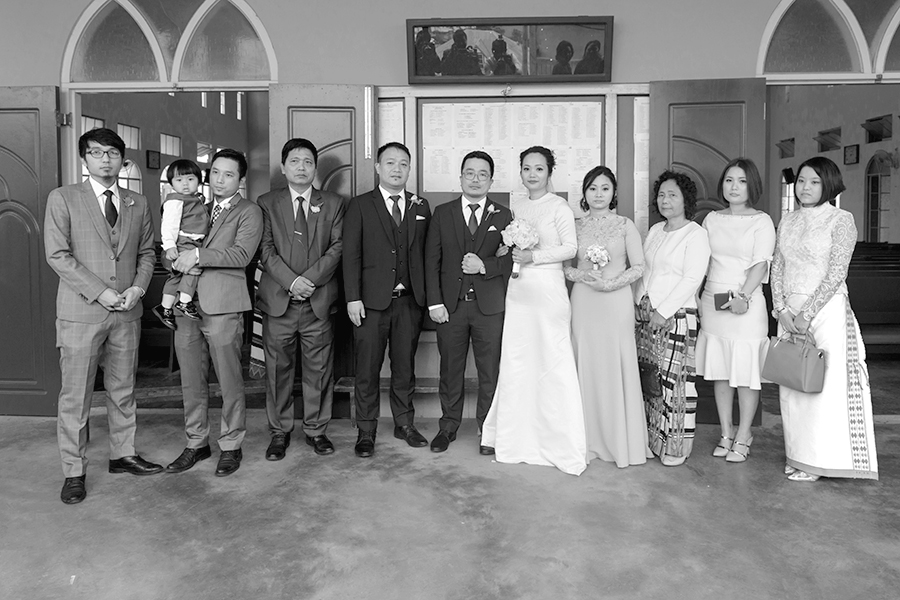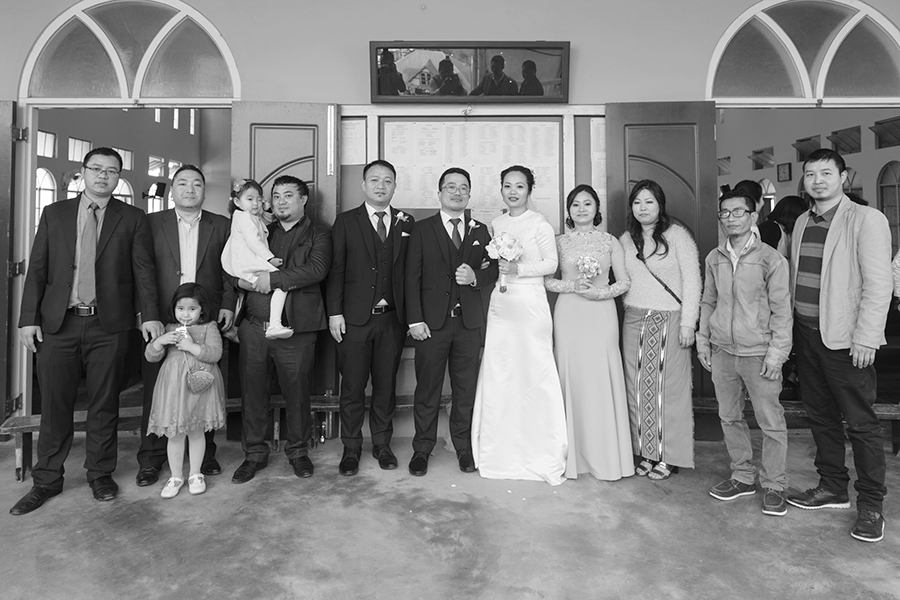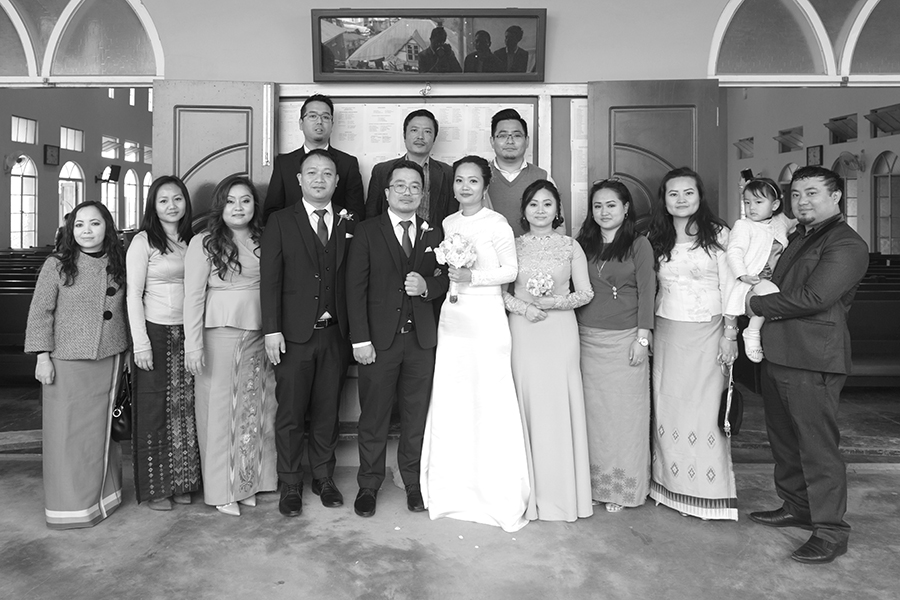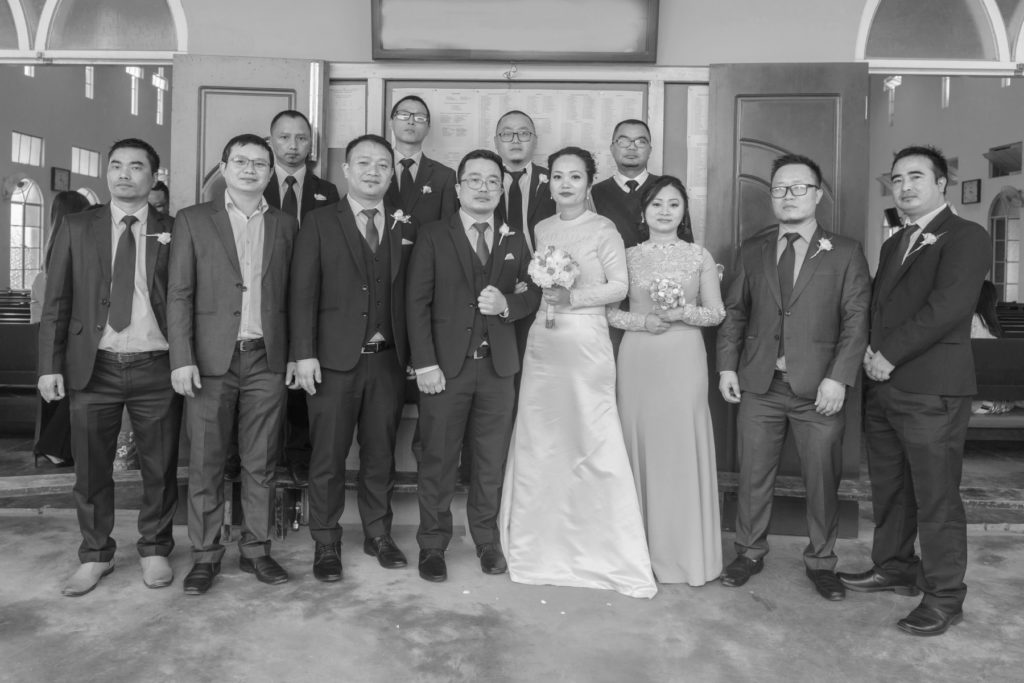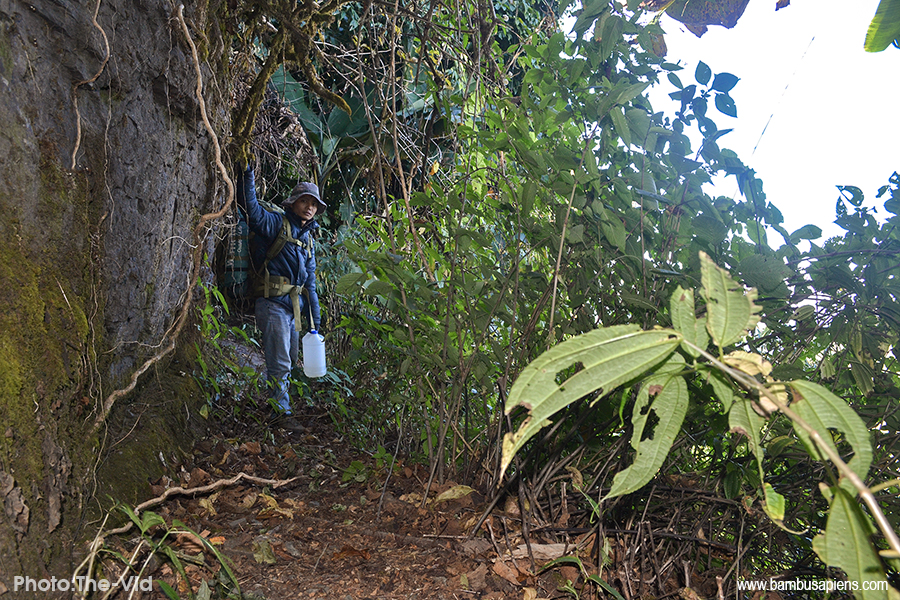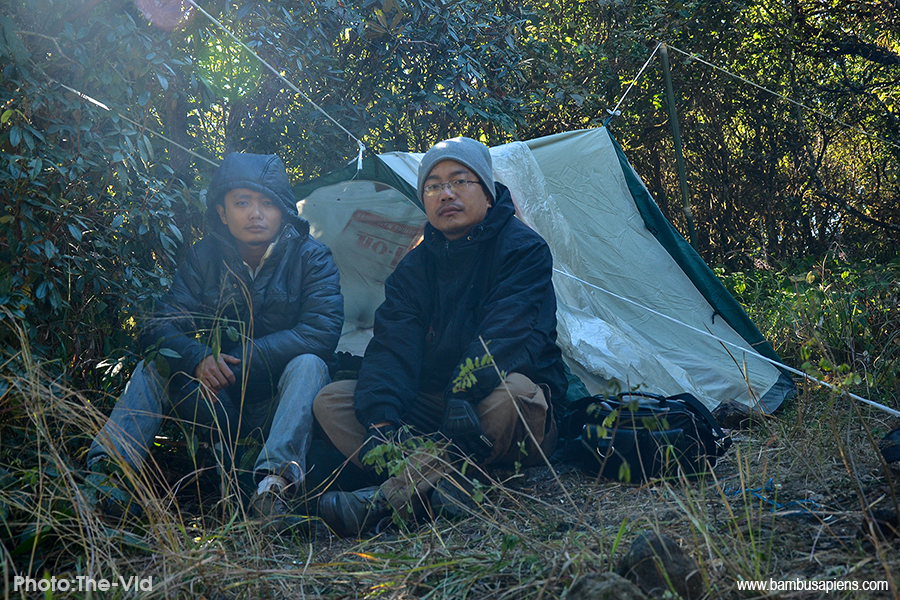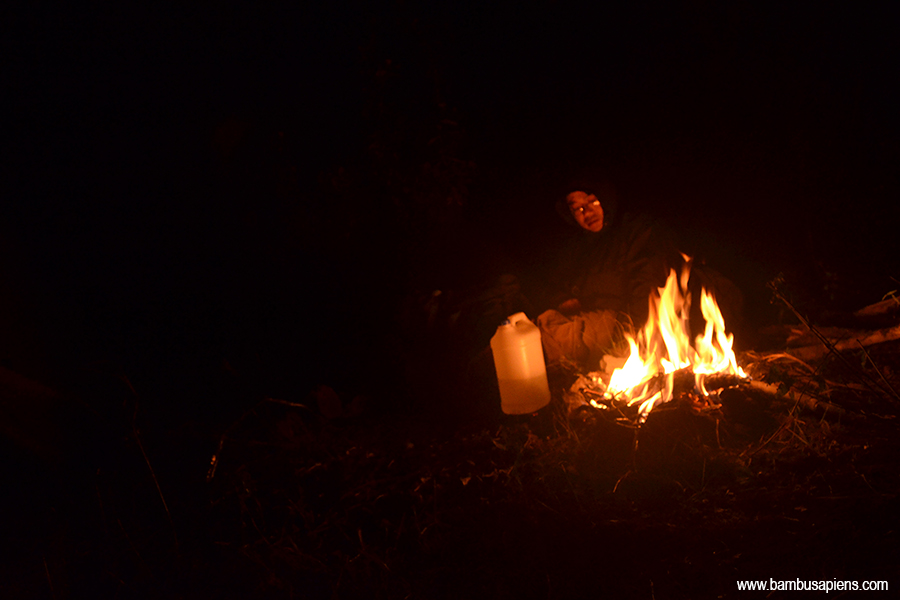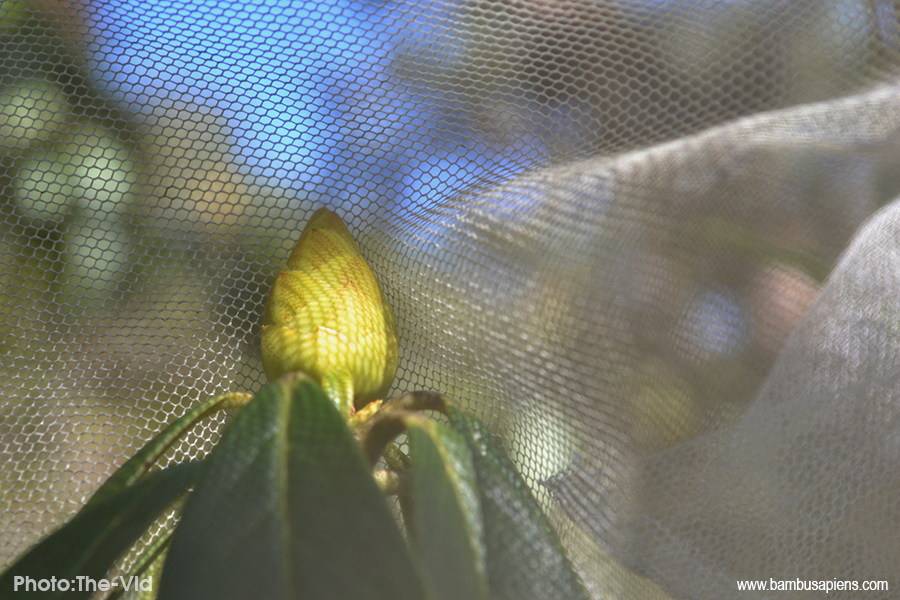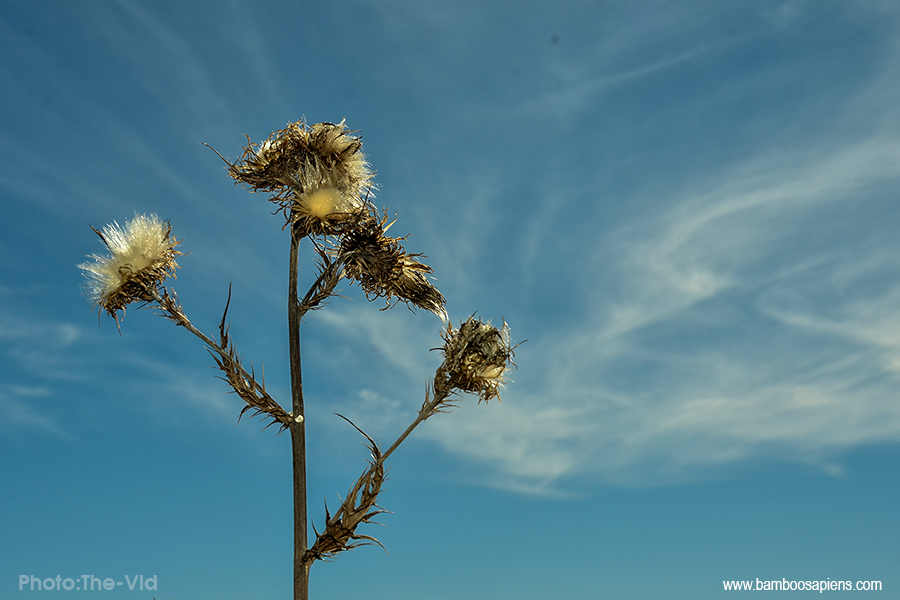Environment & Forest Department-in an chhianchhiah danin kum 2010 thleng khan Mizoramah hian mau chi hrang 35 a awm a, chung zinga 25 chu tualṭo a ni a, a dang 10 chu lakluh (introduced) a ni (E&F, 2010); heng ramdang maute hi kum 2006 aṭanga 2009 inkara Mautam dolêtna scheme – BAFFACOS (Bamboo Flowering and Famine Combat Scheme) leh National Bamboo Mission (NBM) kaltlang te a lakluh ni berin a lang. Ramdang mau, Mizorama lakluh tam zawk hi a tira a laluttu te beisei leh ngaihtuah ang kha pha tak ang maw?
Kan Chief Minister zahawm takin chawkluh a tum raw chi 2, Mizo te dinchhuahna tur bulpui, India Hmarchhaka helna tihrehna tur a hmanraw tangkai la ni thei te hi i lo bihchiang dawn teh ang:
1. Dendrocalamus brandisii (Munro) Kurz–
Raw lian tak, hung nei chi, Tropical Wet Evergreen Forest (Phai-ruahtui dawng tam ngaw)-a awm chi a ni a, India ramah chuan Manipur leh Andaman thliarkarah a tualṭo-a, Myanmar, Thailand tih velah a awm bawk. India ram hmundangah a tualṭo thu sawi a la awm lo. Manipur-ah chuan Jiribam chhehvelah a tualṭo a, Meitei ho chuan ‘Wanan’ tiin an sawi. Kum 1913 chho aṭang khan Coorg District, Karnataka-ah lakluh a ni a, ‘Burma bamboo’ tia hriat a ni, chuta ṭang chuan India ram hmundangah, a bikin Chhim lamah, thehdarh a ni ve ta zel a ni. India chhimlama an duhchhan nia an tarlan chu khung lai rama mau-raw tualṭo [Bambusa bambos (Mizo: rawhling); Dendrocalamus strictus (Mizo: Tursing)] te ang lo taka hling a neih ve loh vang te, a pum/a hung a ngil vang te leh a pum a len zawk vang te a ni ber (Viswanath et. al. 2013). Karnataka leh a chhehvela an hmanna tam ber chu deh hnang atan te, pal banah te leh leilawn siam nan te a ni a (Singh 1986; Viswanathan et al. 2013), Manipur-a a tualṭonaah chuan a tuai an ei a (Viswanathan et al 2013), Manipur khawpui Imphal leh a chhevel bazar-a mau-raw lam kaihhnawih thil chi hrang hrang zawrhnaah erawh ‘Wanan’ aṭanga siam emaw a tuai emaw a awm ve lo thung (Singh et al. 2003).
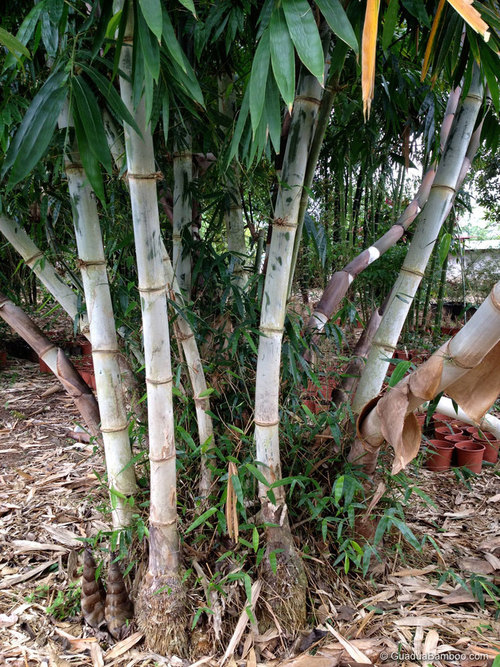
India Chhim lam state ṭhenkhata an chin, Institute of Wood Science and Technology (IWST), Bangalore ten an zirchianna aṭanga a ṭhatna leh ṭhat tawklohna an sawi hrang hrang lo thlir ila:
1.1 A ṭhatna te:
(a) Hling a nei lo, a kung a ngil. A hung a bit lo.
(c) Hmun hnawng leh uap (humidity sang)-ah a ṭha duh a, pal-chawi atan te, kawr kam leh dil kama phunah te a ṭha.
(b) A pum a len avang leh a chang a khat avangin paih tur a tlem a, agarbatti kuang atana hman a remchang.
(d) Tuai a chhuah hnem; a tuai hi a eitlak bawk. Deh hnang atan leh hriamhrei fawng/ha atan a ṭha bawk. Maimaw pangnang khawina thlangra atan te, In chhung sekrek thil hrang hrang atan te, thing leh thlai kung do na atan te a ṭha.
(e) A tâmin chi a chhuah te hi awlsam takin a ṭiak thei; a chi a tlak hlima kui/chin vat a nih loh chuan a thi (inviable) hma hle thung; a zung kar (rhizome) pawh tihpunna remchang tak a ni.
(f) A hnah leh a ṭang tla a tam avangin leiṭha (vermicopost) siamnan a hman theih.
1.2 A ṭhat tawklohna te
(a) Uluk taka enkawl a, a zar hlawi zung zung loh chuan zar hnawksak tak a chhuah hnem a, a len tak tak hnuah phei chuan enkawl harsa tak a ni.
(b) Chinpun atana a zung kar a harsain, a hautak.
(c) A pum a len avangin sah hnuah lakchhuah a hautak.
(d) A pum a len avangin phurhkual a hautak a, a ṭiak leh a bulkar ken kual zung zung a harsa.
(e) Tui a paihnem avangin, uluk taka thah a sawngbawl loh chuan pal leh eng ilo a hmanin a tlo lo, kum a daih meuh lo.
1.3 Bawmtu leh natna
D. brandisii hi India ram hmun tam zawkah mikhual a nih miau avangin India rama mau-raw dang aiin bawmtu leh zar buaitu a ngah emawni tih tur a ni. Chung zinga langsar zualte chu Aphids, leafminer leh termites te a ni.
Aphids – Mau hnah leh a ṭanga tuihnang (sap) dawttu a ni a, a tuai chhuah hlim aṭanga zar a neih thlengin an bawm tlang pui ṭhin, hei hian a kung a ti chaklo-a, a ti hrisello a, a tlo loh phah thei.
Leafminers – Keptuam leh ram tho lam chi ho engemaw zatin D. brandisii hnah hi tuinan an hmang ṭhin a, heng rannung tui te hian mau hnah hi chawah an ring a, an ei filh rel rul ṭhin.
Termites – A pum sah hlim, thah nghal (treatment pêk) siloh hi tlumpi (termites) in an bawm duh hle. Tlumpi hian a thahrui a chhah sak a, ruah tui leh hnawng a ngam loh phah sawt a, a tlo loh phah ṭhin. Tlumpi leh eichhetu laka venhimna kawng awlsam ber chu sah hlim a thah (treatment pêk) a ni.
Leaf blight leh Alternaria leaf spot an tih mai hi Fungi chi lam zinga mi Fusarium spp leh Alternaria spp ten an thlen a ni a. Heng natna hrang hrang te hian mau ṭhan lenna leh a tisa chhungril insiamrema, inthuamchak tur a ti ṭhuanawp a, a zik a tluak loh phah thei a, a tlo loh phah ṭhin.
Mau-raw dang ang bawkin a tam ve ṭhin a, kum 45 – 50 inkardanah, tam dan chi hnih sporadic (tahtawla tam) in emaw leh gregarious (tampui)-in emaw a tam ṭhin. Kum 1961 – 1962 khan Karnataka-ah a tam a, kum 1987 – 1988 khan Manipur-ah a tam bawk. Hemi hnu hian a tam leh thu sawi a awm tawh rih lo.
2. Dendrocalamus latiflorus Munro
Raw chi ṭha nia an sawi dang leh chu Taiwan giant bamboo an tih mai, Taiwan hoin ‘Ma’ an tih Dendrocalamus latiflorus Munro hi a ni a. Myanmar leh China chhimlam leh Taiwan-ah te tualṭo a ngaih a ni a (Dransfield and Widjada, 1995), Asia chhim-chhak lam ram ṭhenkhatah chin pun a ni bawk (Rhind, 1945)
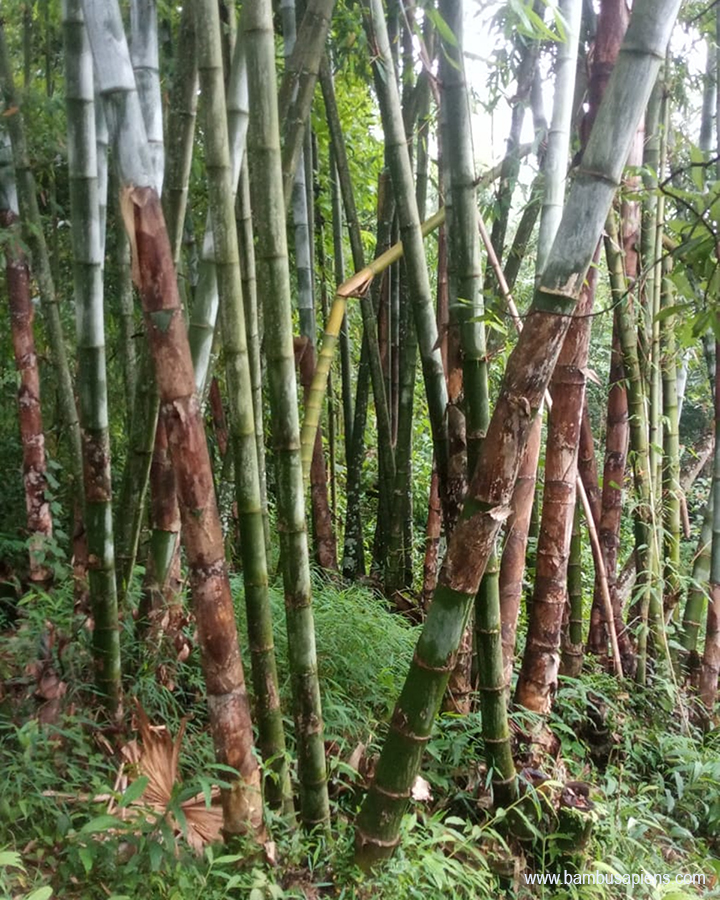
D. latiforus hi hung chhah tak nei chi a ni a, raw sang tak 45 ft aṭanga 82 ft thlenga sang thei a ni a, mau-raw lam chiah chuan a sang thei bera ngaih a ni. A tlang tehkualin 3 inches – 8 inches-a lian a ni tlangpui a, a chang leh chang inkar hi 8 inches – 27 inches-a sei a ni thei bawk. A tualṭona hmunah te hian phaikuam aṭanga Zongaw-ah a ṭo tlangpuia, ruahtui tamna hmunah a ṭhangduang bik bawk. Chutih rual chuan lei bán leh dûpah te, leiṭhil – al bawk si (alkaline) emaw lei thur (acidic)-ah te emaw chuan a ṭhan a ṭhalo a, tuai ei tur phei chuan chin loh a ṭha zawk.
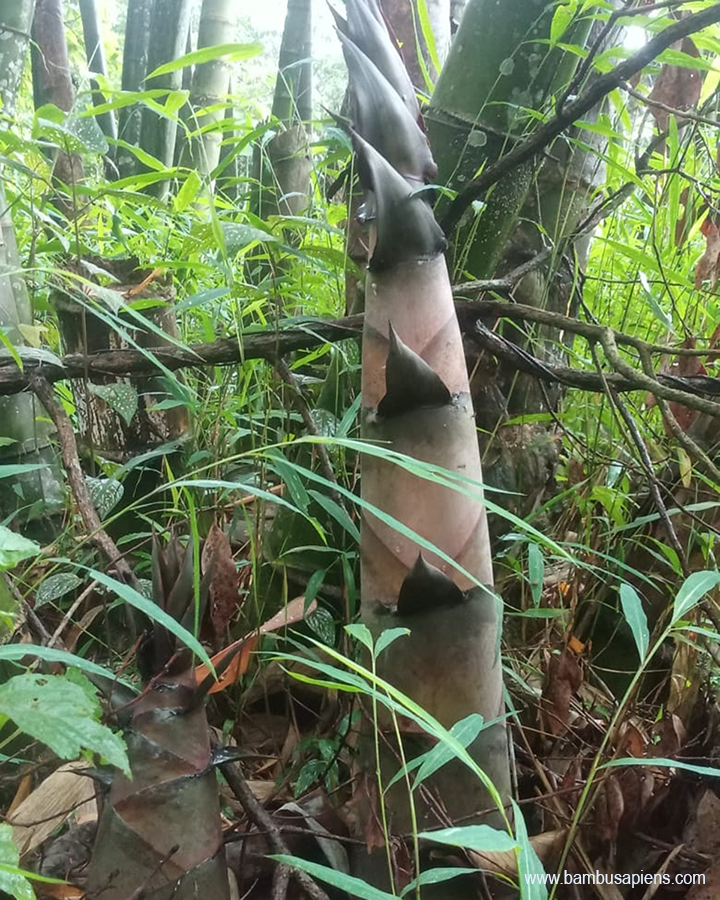
He rua hi Manipur leh Nagaland-ah pawh chin a ni a, Manipur-ah chuan Kuki hoin Myanmar aṭanga an lakluh nia ngaih a ni (Naithani, 2006). India ramah chuan Nagaland hi D. latiflorus tam berna hmun a ni (Naithani, 2006); kum 2004 – 2005 khan Nagaland hmun hrang hrangah a tam a, kum 2008 khan a tahtawlin Manipur-ah a tam ve leh bawk. Raw dang ang thoin kum 45 – 50 inkara tam chi a ni a, a tahtawlin emaw, a pumpuhlumin emaw a tam ṭhin (Naithani, 2006). Taiwan lamah chuan a tam thu hriat tur a awm meuh lo a, Phillipines, Indonesia leh China-ah te erawh a tahtawlin, a hun pangngaiah a tam ṭhin (Dransfield and Widjaja, 1995). A zung kar leh a chi kuiṭiah hmanga chin pun a ni ber a, Taiwan-ah chuan kum 1995 khan hlawhtling takin tissue culture hmangin a chi siam chhuah a ni tawh bawk (Dransfield and Widjada, 1995).

Ralleng (Naga) ho hi Mizo te ang bawk a mau-raw hmang nasa an ni a, In sak nan te, hriamhrei ha/fawng atan te, kawng chi hrang hrangin an hmang a. He rua, D. latiflorus hi Chakesang-Naga ho chuan ‘Kupho’ an ti a, thil kumhlun lo chi, râp In leh chhawl buk sak nan te, Inchhung sekrek thil siam nan te an hmang ber a, mau-raw dang aia a duap avangin a tlo lo a, rinrawlah an neih lo. Angami–Naga ho chuan ‘Vumi’ tiin an sawi a, In châk atan an hmang ber a, slab/beam do nan te an hmang ṭhin. Ao-Naga ho ve thung chuan ‘Warok’ tiin an sawi a, chakkhai leklamah, hmanraw chhehchhawl ber atan an hmang a, thil kumhlun tur chiah an hmang ngai meuh lo a, hun reilo te chhunga hman tur, thehthang leh mai theih atan an hmang deuh ber, thingtlang khaw ṭhenkhatah chuan tui chawi nan an la hmang bawk. Kum 2015-a Chozüba, Phek District-a ka kal ṭum pawhin he rua hi mo lawmna ruai ṭhehnaah kutsilna tur tuidawn atan an hmang.
National Bamboo Policy (Revised) leh kan beisei raw chi hnih
India ramin mau tharchhuah leh a kaihhnawih lama hma kan sawn theihna tura hmalakna lianpui mai kan neih chu National Bamboo Mission a ni a, kum 2006 – 2007 khan a thawhkhatna duan chhuah a hman nghal a ni a, he Mission kaltlang hian Mizoramah pawh Mau plantation engemawzat siam a ni nghe nghe a, a chhawr ber State te zinga mi pawh kan ni awm e. Kum 2018 khan NBM hnathawh dan leh hmasawn dan te ennawn a ni a, kalphung thar an duang a, Operational guidelines of National Bamboo Mission (Revised June, 2019) siam chhuah a ni ta a ni.
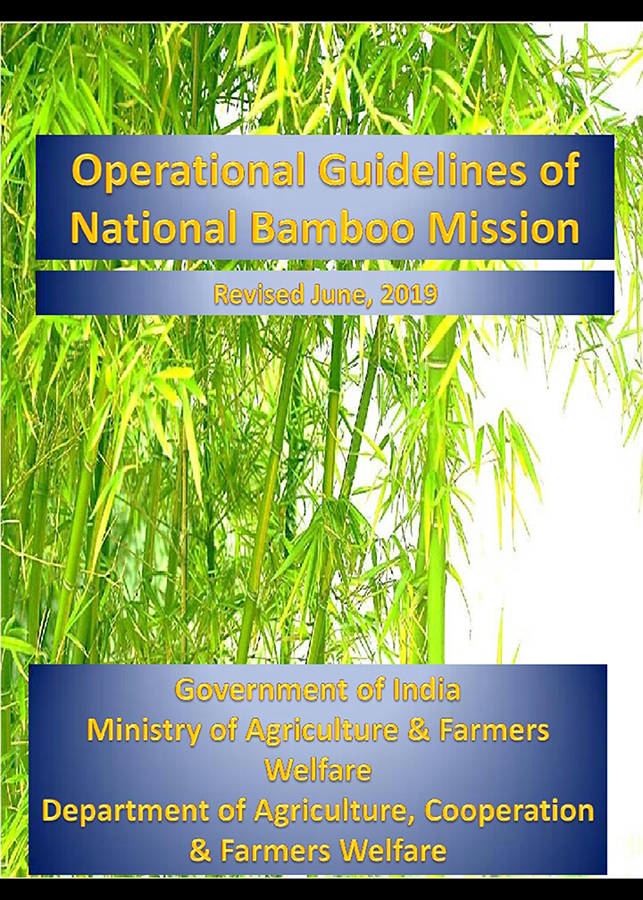
Chu guidelines-ah chuan a ram leilung leh sik leh sa a zirin mau chin pun tur thlan tur a nih thu te leh a ram mi ten an mamawh leh hman ṭangkai chi ngaihpawimawh a nih tur thu te tarlan a ni a (section 10.1); rawmngaw nilo, ram bua leh thing ṭo lohna hmunah te, luikamah te heng mau te hi chin tur a ni. India rama mau tamna hmuna mi te leh mau hman uarna hmuna mi te hman dan hrang hrang te, khawvelin mau a hman dan te bakah, sik leh sa leh ram leilung te thlir chungin he guidelines-ah hian mau chin tur bik chi kua a tarlan a ni a (section 10.2), chung zinga chi 5 – Rawṭhing (Bambusa tulda), Ankuang (B. nutans), Phulrua (Dendrocalamus hamiltonii), Phungkirua (Thyrsostachys oliverii) leh Mautak (Melocanna baccifera) te chu Mizoram kan neih sa te vek an ni a. Mizoram kan neihsa loh te hi India Hmarchhaka kan state ṭhenawm hnaia tualṭo te vek a ni a, kan ram hruaitu te duhthusam raw chi hnih – D. brandisii leh D. latiflorus te hi chu an tel ve lo!
Hung nei nge neilo?
Hman deuh khan China mau ṭha chi Moso kha lakluh tumin an beichiam tawh a, an duh chhan chu “a pum a lian a, hung a neilo bawk a, sah a awl” tih kha a ni a. Tun ṭuma raw chi hnih te hi “a pum a len bakah hung nei chi…” a nih vanga thlan a ni leh thung lawi a. Khawvelah hian rua leh mau te hi an ṭo dan a zirin chi hnihin an ṭhen phawk a, chi khat chu hung nei chi, Science ṭawngkama ‘Sympodial’ an tih mai chi hi a ni a, ‘tufted’ tih te ‘caepitose’ tih te pawhin an sawi bawk. Chi dang leh chu hung neilo chi a ni a, ‘monopodial’ tiin Science ṭawngkam chuan an sawi a, ‘running bamboo’ tiin an sawi ṭhin bawk. Running bamboo an tih chhan chu a zungpui (rhizome) hi a ṭhan chak vang leh a insemdarh chak vang a ni; rawtuai/mautuai te hi he rhizome aṭanga lo chawrchhuak ṭhin hi a ni. Zirmite chuan a hung nei chi aiin a hung neilo chi hi inthlahpung chak zawkin an sawi a, tin, a hung nei hi chu a bawrkhawm luk ṭhin avangin a zung ṭhang zel tur leh tuaichhuah zel turin amah leh amah a indip (congest) hma bik. Tun ṭuma kan hruaitu te raw duh chi hnih te hi hung nei chi, tuai chhuah chak zawk tur a sawi a ni a; hung neilo chi, mautak ang chi ho hi inthlahpung chaklo zawk anga sawi a ni bawk. Zir mite sawi dan nen chuan a inletling hlauh thung mai.
A ṭiak
Kan ram hruaitu lam ten a chi siamchhuaktu pakhat chauh awm angin an sawi a, Assembly House-ah hial pawh a siamtupa monu damlohna avanga a chi la dawng lo anga sawi a ni. Tunge a nih ka hre hauhlo a, Growmore Biotech Ltd neitupa, Dr Barathi kha a nih ka ring thla ngawt a. Growmore Biotech hian an website (www.growmorebiotech.com)-a an tarlan danin an buaipui ber chu Beema bamboo an tih mai, Bambusa balcooa aṭanga raw chi thar deuh, tissue culture hmanga an siamchhuah chu a ni.
Tissue culture hmanga D. brandisii ṭiak an siamchhuah chu Kerala Forest Research Insitute (KFRI), Peechi-ah te, Institute of Wood Science and Technology (IWST), Bangalore-ah te leh hmun hrang hrangah lei tur an neih thu Kerala State Bamboo Mission chuan an tarlang a (http://www.keralabamboomission.org). KFRI leh IWST te hi zirlai kan nih lain a hmunah ngei kan lo zu tlawhin kan thlenchilh tawh a, an hnathawh ropui zia a takin kan hmu tawh. KFRI phei hi chuan mau leh tairaw zirchianna lam bik tihchhuahna changtlung tak, ‘Journal of bamboo and rattan’ (International peer reviewed Journal) an nei nghe nghe. Tin, kan sawi tawh angin D. latiflorus hi chu kum 1995 khan Taiwan ramah tissue culture hmangin a chi siamchhuah a ni tawh.
Eng atan ber nge kan hman dawn?
Heng raw chi hnih hi lo neiin, kan ramah hian lo ṭhangduang ta pawh ni ta tehreng sela engtia hman nge kan tum? tih hi zawhna lian tak, kan Sorkar Flagship programme sawifiahnaa la sawi telloh a ni. Sahsa lakkhawma, phurchhuah dan tur erawh ngaihtuah tel a ni a, a hralh dan tur emaw, a sawngbawl dan tur emaw chu sawichhuah a la ni lo. A hmanna tur hriatsa thlai leh thildang tam tak kan chawk luh tawh te pawh kan hlawhtlinpui hleihtheih loh laia hmanna tur pawh kan la hriat chiah loh han bawhzui chu a huphurhawm angreng viau mai, beidawn tizualtu a ni leh ang tih a hlauhawm mang e. Zir miten ram hrang hranga an hmanna an sawiah hian heng raw chi hnih te hi “a tuai a tui thu leh a tuai ei atana an chin pun” a nih thu an tarlang tlangpui a; “a rua hi a duap avangin thah loh chuan a tlo lo a, rinrawla neih chi a nih loh thu” an sawi zel bawk a, zir ve lem lo, Zopa thil chika lo chik ve, Ralleng pa ho pawhin chutiang tho chuan an sawi bawk. A hmanna dang an sawi leh chu paper siamna a ni; Mizorama kan ngah êm êm, mautak phei hi paper ṭha chi siamnan an duh deuh bik.
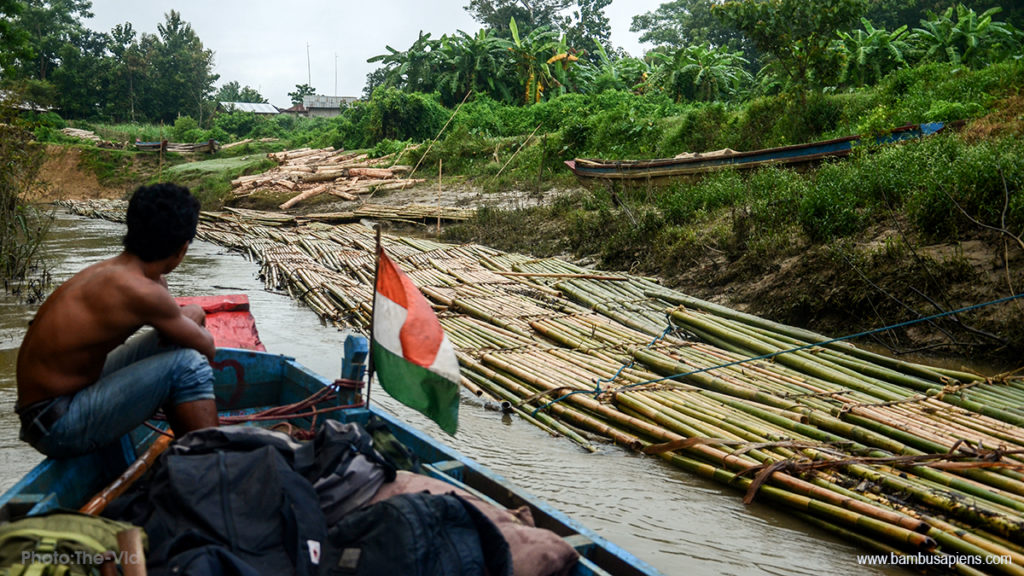
Mizoramah rua leh mau heti zat kan neih te hmusit a, ram dang mau, a ṭhat zawkna awm chuang silo ngaisang a, lakluh phet tum mai hi engngemaw a awmzia ni dawn le? Kan rama mau awmsa hmanga siamchhuah theih tur, ramdanga thawnchhuah tlak siamchhuak thei tur zawnga hmalak hi a fuh zawk dawn lo’m ni? Rua a ni emaw mau a ni emaw, eng chi pawhin kumkhat chhungin a nu a tiat tih erawh thudik a ni, kumkhat chhungin a puitlin huna a nih tur ang tiat leh chen a ni nghal ṭhin.
Mizorama Mau-raw chungchang article dang chhiar duh tan www.bambusapiens.com/mau-mawlsawmna/ Vanglaini chanchinbua tihchhuah tawh hi chhiar belh theih a ni bawk ang.
[Zirchianna hi BIOCONE bultuma neih a ni a, VANGLAINI (Mizo Daily)-a Jul. 23, 2019-a tihchhuah a ni]
Thulakna te:
Anonymous (2019). Operational guidelines of National Bamboo Mission (Revised June, 2019). Ministry of Agriculture and Farmers Welfare, Government of India, New Delhi.
Dransfield, S. and E.A. Widjaja (1995). Plant Resources of South-East Asia No. 7. Backhuys, Leiden.
Environment & Forest (2010). Bamboos of Mizoram. Environment and Forest Department. Government of Mizoram, Aizawl. Pp. 1 – 206
Naithani, H.B. (2006). Occurrence and flowering of a Bamboo Dendrocalamus latiflorus Munro, in Nagaland, India. Indian Forester 132(3):358 – 364.
Rhid, D. (1945). The Grasses of Burma. Baptist Mission Press, Calcutta. pp. 1-99.
Viswanath, S., Chethan, K., Srivastava, Joshi, G., Sowmya, C. and Joshi, S.C. (2013). Dendrocalamus brandisii (Munro) Kurz. An ideal bamboo species for domestication in humid tropics. IWST Technical Bulletin No. 12. A Publication of Institute of Wood Science and Technology, Bangalore. Pp 1- 32.
